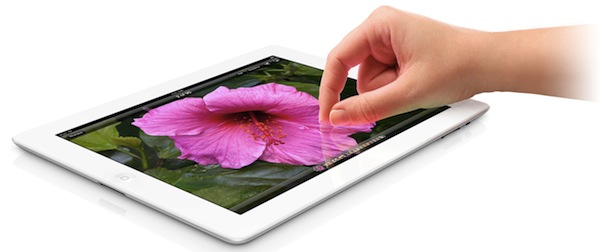Following yesterday’s announcement of the new iPad, a debate has arisen as to whether Apple should have called the new iPad something along the lines of “iPad 3” or “iPad HD” so to give the device a unique name easily understandable by consumers. I think Macworld has the two smartest (and most balanced) takes on the subjects.
Dan Moren thinks going with “iPad” is a good move:
Constantly reinventing a nomenclature is unsustainable. Is every iPad between now and 2022 going to have a different number, letter, or some combination appended? Is Apple going to eventually reach the iPad 13GS+ Extreme? I’d argue that’s exactly what the company doesn’t want.
I drive a Honda Accord. It’s a 2006 model. If Apple wants to keep the same names for its products each year like car companies do, adding a year to the product name seems like a fine approach. I always know which wipers to get for my 2006 Accord. I think the average consumer ought to know which case fits their iPad, too; making them instead rely on distinctions like third-generation—that aren’t in the official product names, or printed on the devices themselves—just makes things harder.
The first few seconds after Tim Cook was photographed on stage with a big “The new iPad” image behind him, I, too, was slightly confused and disappointed. Why would Apple want to go back to just iPad, after years of iPhone 4, iPad 2, and iPhone 4S? But then I, like Lex, thought about car companies. I am not driving a Polo 13. My mom doesn’t drive a Meriva 2S. Yet, in case of necessity, both my mom and I – the polar opposites on a scale from consumer to nerd – would know how to look up the company’s proper model name – the “version” – of the cars we drive. Mine’s a 2003 Polo. Not every car company does this, but it’s very common (and easy to understand).
I hear the concerns of people like Lex. Not having a unique name for each generation of device does make things harder when it comes to support, referencing a product in an article, or looking up information on Google. It means you have to do more work. It means you have to type a little more to find out – either in manuals or support docs or the Apple Store itself – what generation of device you are talking about. It’s about Apple not giving us a unique way to call the iPad – well, actually they do, it’s iPad, but that makes some people uncomfortable. It’s unsettling at first, because we were used to a different convention.
But here’s the thing: people are not stupid. Sure, some people are geekier than others, but as car companies prove, eventually people find a way to properly retrieve information about the products they use. Eventually, as in more work. Which could mean using Google, reading a manual, asking a friend, or driving to the nearest Apple Store. Apple has the best customer support around, and no tech company beats Apple’s online Support resources. No one ever died from looking up a model name. 1
But why? The trade-off is an increase in simplicity and elegance. Otherwise, we’d end up like Samsung and Square-Enix, naming our products with monickers like “Epic” or “XIV” (good luck telling a 10 year-old kid that’s 14, and not “xiv”).
More importantly, Apple’s new name puts the focus on the essence of the product, not the way it follows its predecessor year after year. It’s iPad, my friend Matthew was told by Apple. And I see the thinking behind such choice: by combining a more elegant name with new features, Apple will, yes, end up having to explain better its model numbers, but they will gain in user-friendliness and overall message. Because, again, our faith in humanity might falter every once in a while, but people know how to refer to a product. If anything, my dad would have a hard time differentiating between 3GS, 4S and 3G. But he sure knows how to say “that new iPad”.
It’s about context. People will understand, and will find a way to explain what they are talking about. And if they want to be precise, hey, Apple has a way for that too.
Peter Cohen writes:
I’d also like to point out that when the first iPad was introduced, its name was the subject of huge controversy in the blogosphere and among the tech punditry, many of whom considered the name silly or likened it to a feminine hygiene product.
I also like to see it this way: by going back to “iPad”, Apple reminds us that is the iPad that should have always been. The realization of a vision. The most advanced display ever seen in a mobile device, the fastest networking available, the most apps to choose from. It’s the new iPad, but it’s also the iPad that should have been here in the first place. Now we have the technology that makes it possible.
I thought the keynote’s theme would have been “the biggest leap since the original iPad”. Tim Cook said it better: “We have redefined, once again, the category that Apple created”.
- To those arguing that specific names and version numbers are necessary for support, especially in software: I agree, and indeed Apple has a complete name for the iPad on its site and online Store. I could also argue that it’s harder to describe software (bits) compared to a product (a physical object).↩︎


